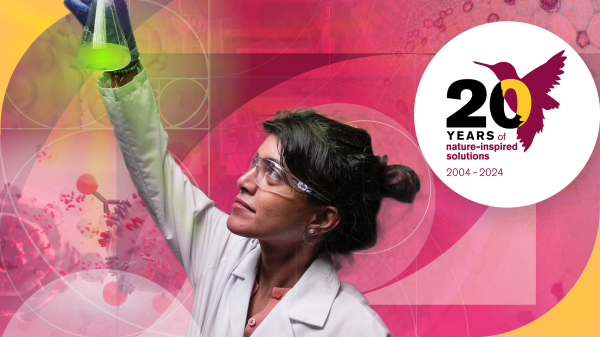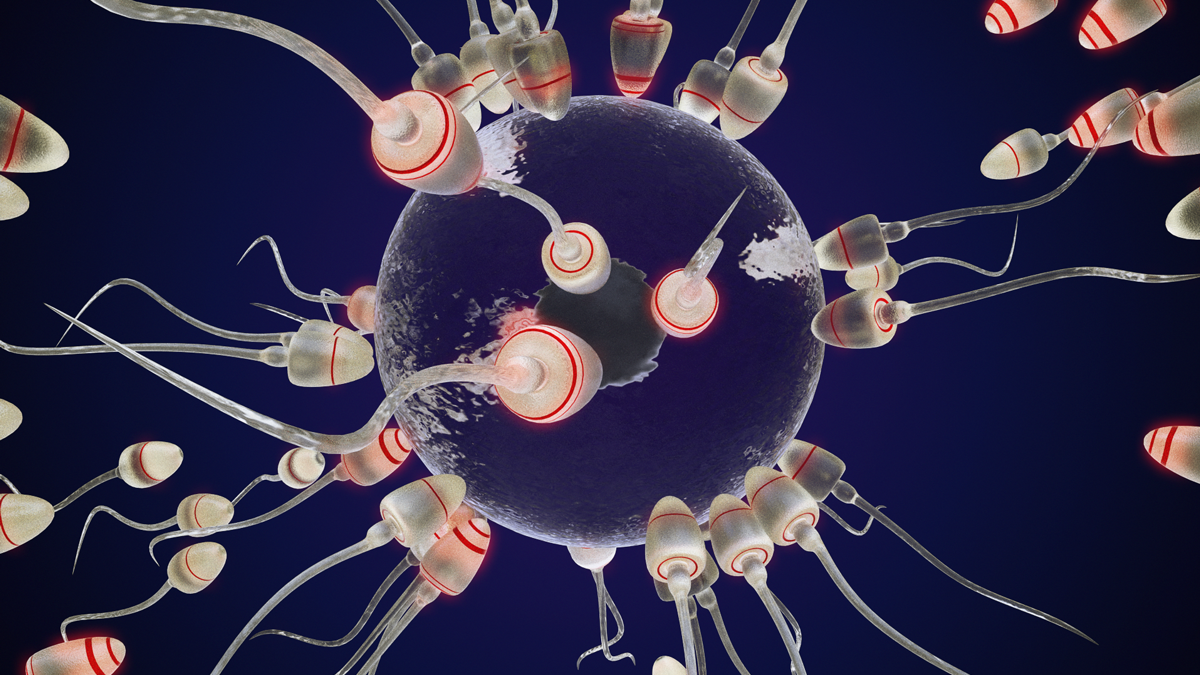The word “mutation” conjures many images, virtually all of them negative. For example, mutations in the human genome cause crippling birth abnormalities and are the source of innumerable genetic diseases, from hemophilia and sickle cell anemia to congenital heart defects and cancer.
Mutations, however, are also the engines of change and account for the astonishing diversity of life on Earth. Over time, the process of natural selection acts to retain those mutations that are beneficial to an organism’s fitness — its ability to grow to adulthood and successfully reproduce — while editing out mutations that cause declines in fitness.
This perpetually self-correcting process allows for both the divergence of species into new and unpredictable forms and the ability of species to adapt to changing environments and optimize their chances of survival. And for researchers, teasing out the origins of these changes could aid in treatment in certain disease-associated mutations.
Mutant world
Melissa Wilson Sayres, an evolutionary geneticist affiliated with Arizona State University’s Biodesign Institute, studies rates of mutation in a range of organisms, including humans. Much of her work focuses on the evolutionary contributions of a particular pair of chromosomes: the X and Y.
In a new study appearing in the journal Genome Biology and Evolution, Wilson Sayres and ASU assistant research scientist Pooja Narang examine a phenomenon known as male mutation bias.
“This project is driven by trying to understand why the mutation rate is different in genetic males vs. genetic females,” Wilson Sayres said.
The fact that males contribute more genetic mutations than females is a feature of evolution observed not only across mammalian species but in diverse life forms, including birds and fish.
At least part of the secret behind male mutation bias may be found by looking at so-called germline cells — the sperm and egg cells whose DNA combine during conception, beginning the formation of new offspring. It is these germline mutations that are passed to successive generations, enriching species’ genomes with unpredictable genetic novelties.
Each time a germline cell divides, its DNA must be faithfully duplicated in the resulting daughter cell. But the process is imprecise, and errors in the form of mutations can arise, like a word or phrase miscopied from a notebook. The accrual of such mutations is age-dependent. The sperm of a 20-year-old man has undergone roughly 160 chromosome replications, while that of a 40-year-old man has undergone roughly 610.
Because sperm undergo many more cell divisions than eggs do, there is a greater likelihood of mutations derived from sperm entering the genome. This is exactly what has been observed across humans and other mammals.
The study of male mutation bias is critically important for researchers like Wilson Sayres and Narang, as it can help tease out which genetic mutations arise from mistakes in replication and which are replication-independent. Currently, there are more than 100,000 disease-associated mutations in the Human Gene Mutation database (HGMD). As the authors note, it is important for human health to determine the mechanisms underlying these mutations. From a therapeutic standpoint, replication-independent mutations — for example, those due to environmental factors — may be more susceptible to treatment.
Solving for X
Among the 23 chromosomes found in humans, the sex chromosomes are unique for a number of reasons. The most obvious one is that they are responsible for determining whether a child is born genetically male or female. This happens during conception when some 500 million sperm race toward the female egg.
While eggs always carry an X chromosome, only about half of all sperm carry an X chromosome, while the other half carry a Y. Fusion of sperm and egg typically results in a female, when the fertilizing sperm carries a X chromosome (producing an XX offspring), or a male, should the sperm carry a Y chromosome (producing an XY offspring).
The authors describe a clever technique for identifying differences in the rate of mutations contributed by the two sexes. The strategy requires researchers to determine a quantity known as α — the ratio of male-to-female mutation rates. Finding α can be accomplished by comparing the mutation rates between the two sex chromosomes or the rates between a sex chromosome and the non-sex chromosomes, known as autosomes. The current study follows the latter approach, comparing mutations occurring on the X chromosome with those showing up on the autosomes.
In mammals, the autosomes spend an equal amount of time in males and females, with the two sexes contributing equal shares of mutations. The X chromosome, on the other hand, spends about two-thirds of its time in the female germline and about one-third of its time in the male germline. This allows α to be calculated from the ratio of X-derived mutations to autosome-derived mutations, or X/A.
An α equal to 1 indicates no mutation bias; less than 1 indicates female mutation bias while an α greater than 1 indicates male mutation bias, sometimes called male-driven evolution.
As the new study reveals, however, this is where things get interesting.
Near and far from genes
Genes are those sections of the DNA that code for particular proteins and are responsible for most of our physical traits. Evolution is fussy about these areas of the genome because they are so vitally important to an organism’s survival. Such sites are evolutionarily conserved, meaning that mutations that adversely affect fitness are edited out over successive generations.
Unsurprisingly, genetic mutations are therefore more common in the DNA regions falling between genes. Here, nature may tamper with sequences in the genome, adding, subtracting or changing the fundamental units or nucleotides, without significant effects to an organism’s health and well-being.
“These regions in between the genes are compared in different species to understand how the species evolved,” Narang said.
Until recently, DNA sites falling between coding genes were assumed to exhibit an equal vulnerability to mutation. Instead, new research shows that mutations increase as the distance from a given gene increases. In practical terms, this means that divergence between related species increases along the genome as one gets further from genes.
In comparing mutation rates in the X chromosomes vs. the autosomes, the new research goes a step further in overturning the paradigm of consistent mutation rates in non-coding regions. The data — derived from whole genome sequencing across the great apes (including humans) — show that divergence increases with distance from genes in both the X chromosome and autosomes, but the divergence is more rapid on the X chromosome.
This presents a serious problem and accounts for the wide disparity in the calculations of male-to-female mutation rates or α. If the ratio of X-linked and autosome-linked mutations is constantly changing with distance from genes, the estimate of the X to A ratio will also be a moving target.
“The whole take-home of this study is that you have to be really careful about the genetic region you're looking at,” Wilson Sayres said. “You have to get very far from genes in the genome to get a really accurate estimate of how many mutations are coming from genetic mom vs. genetic dad.”
In the past, evolutionary geneticists have been hampered by the paucity of whole genome sequence data across the tree of life, but renewed efforts, driven by advances in technology, are rapidly changing the landscape. Comparative genomes from a wide range of species will soon come online, permitting fine-grained analyses of many biological features and their correlation with mutation rate.
Melissa Wilson-Sayres is an assistant professor in ASU’s School of Life Sciences and a researcher in the Center for Evolution and Medicine.
Top image: Human sperm bearing either an X or a Y chromosome stream toward a human egg, which carries an X chromosome. Fertilization by an X-carrying sperm generally results in a genetic female offspring (XX) while a Y-carrying sperm will lead to a male offspring (XY). Because sperm undergo many more cycles of replication than eggs, more male mutations can become part of the genome — a phenomenon known as male mutation bias. Graphic by Jason Drees/Biodesign Institute
More Science and technology

ASU-led Southwest Advanced Prototyping Hub awarded $21.3M for 2nd year of funding for microelectronics projects
The Southwest Advanced Prototyping (SWAP) Hub, led by Arizona State University, has been awarded $21.3 million in Year 2 funding under the CHIPS and Science Act to continue its work advancing the…

Celebrating '20 Years of Discovery' at the Biodesign Institute
Editor’s note: The Biodesign Institute at Arizona State University wraps up its 20th anniversary with the sixth and final installment of its "20 Years of Discovery" series. Each story highlights…

Student research supports semiconductor sustainability
As microelectronics have become an increasingly essential part of modern society, greenhouse gas emissions, which are associated with their use and manufacture, have increased in tandem.…
